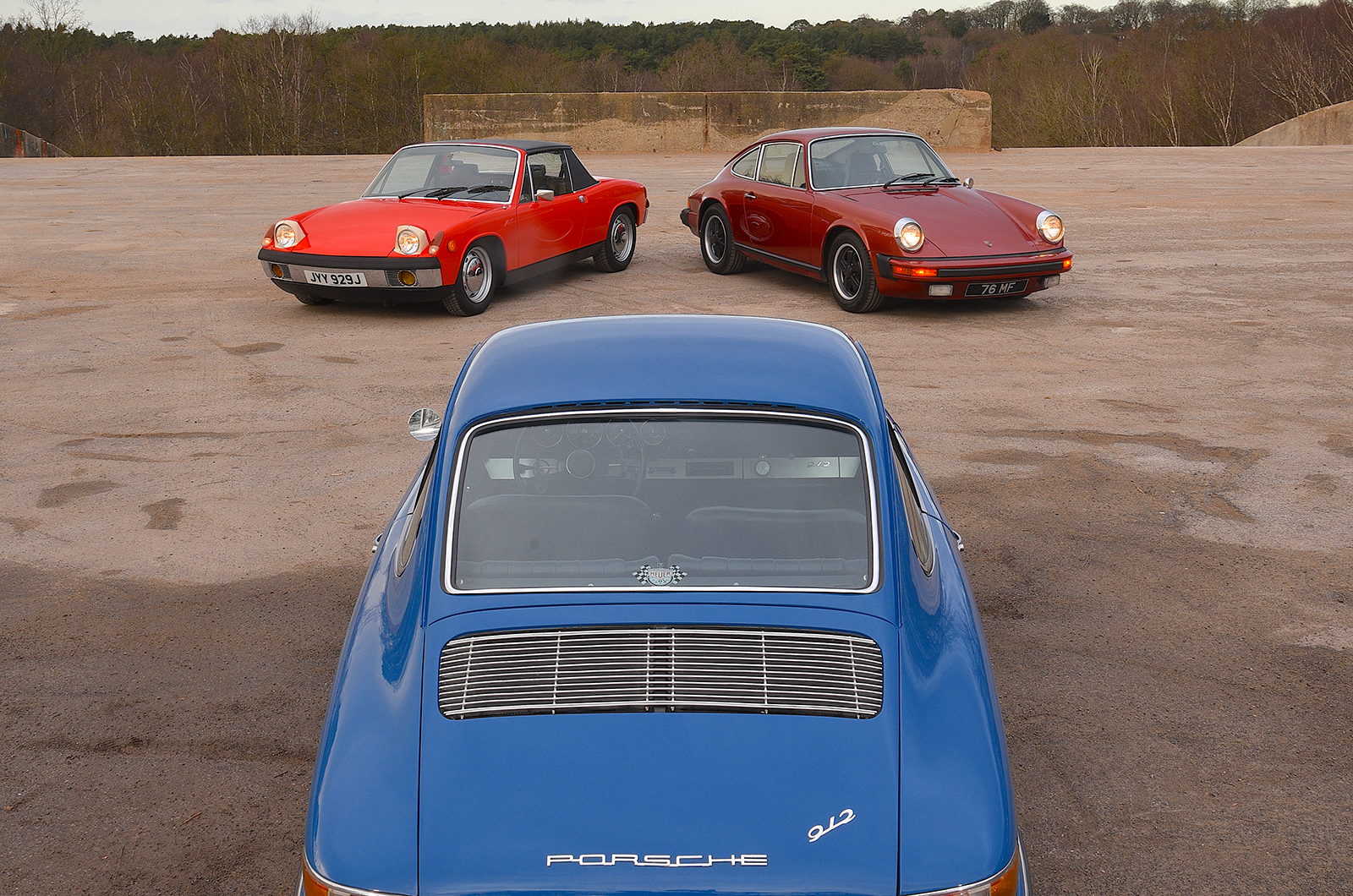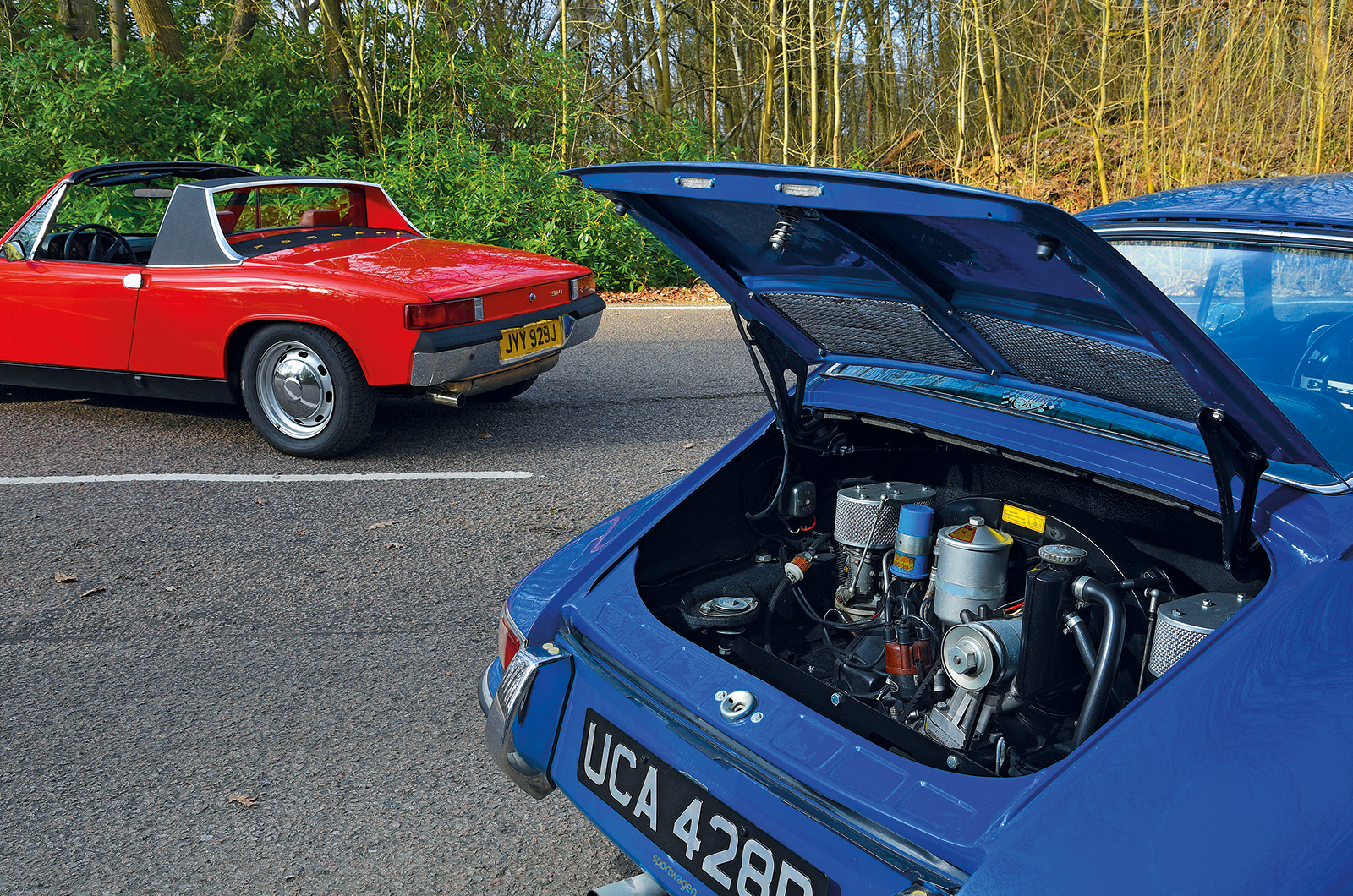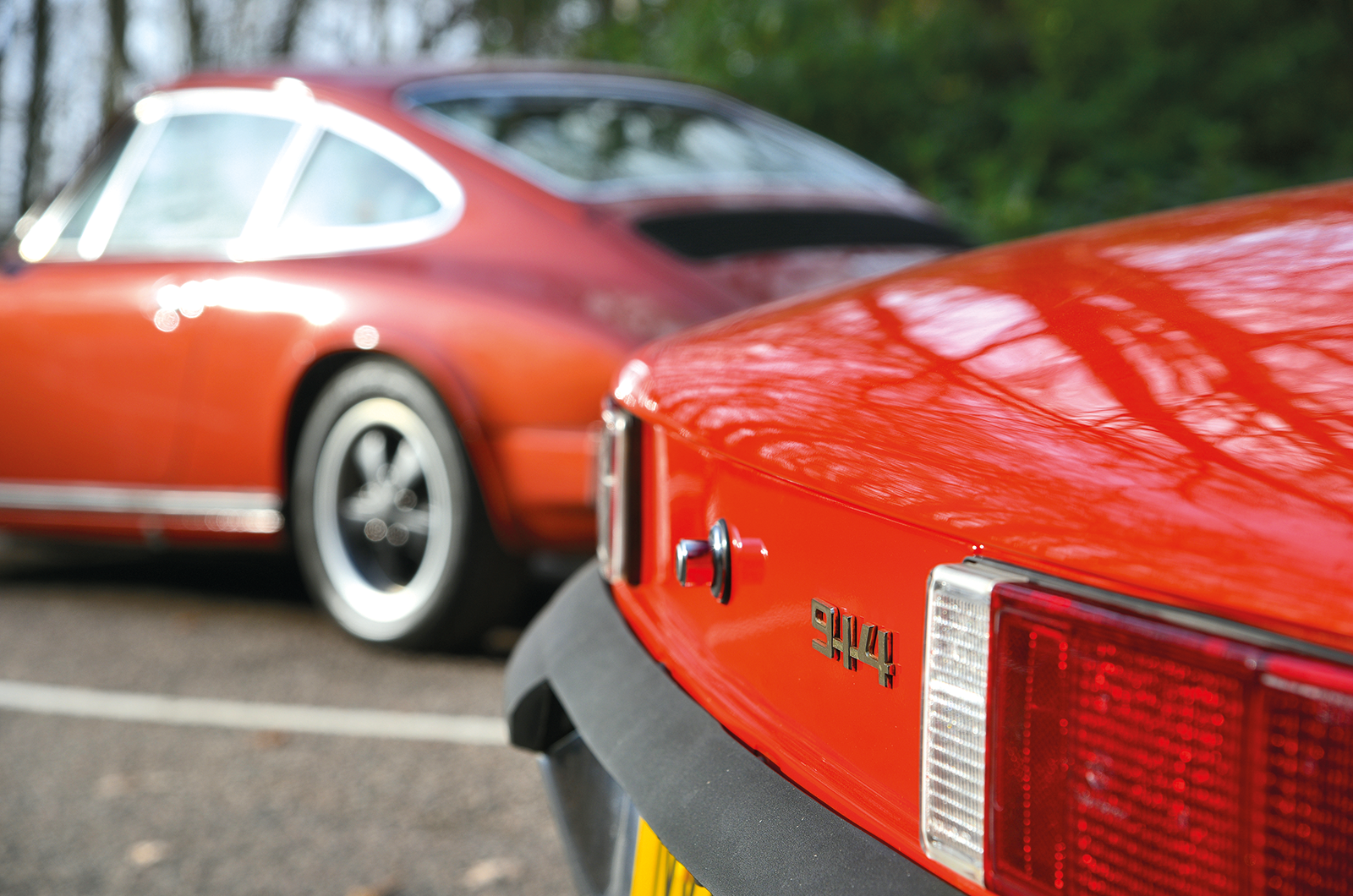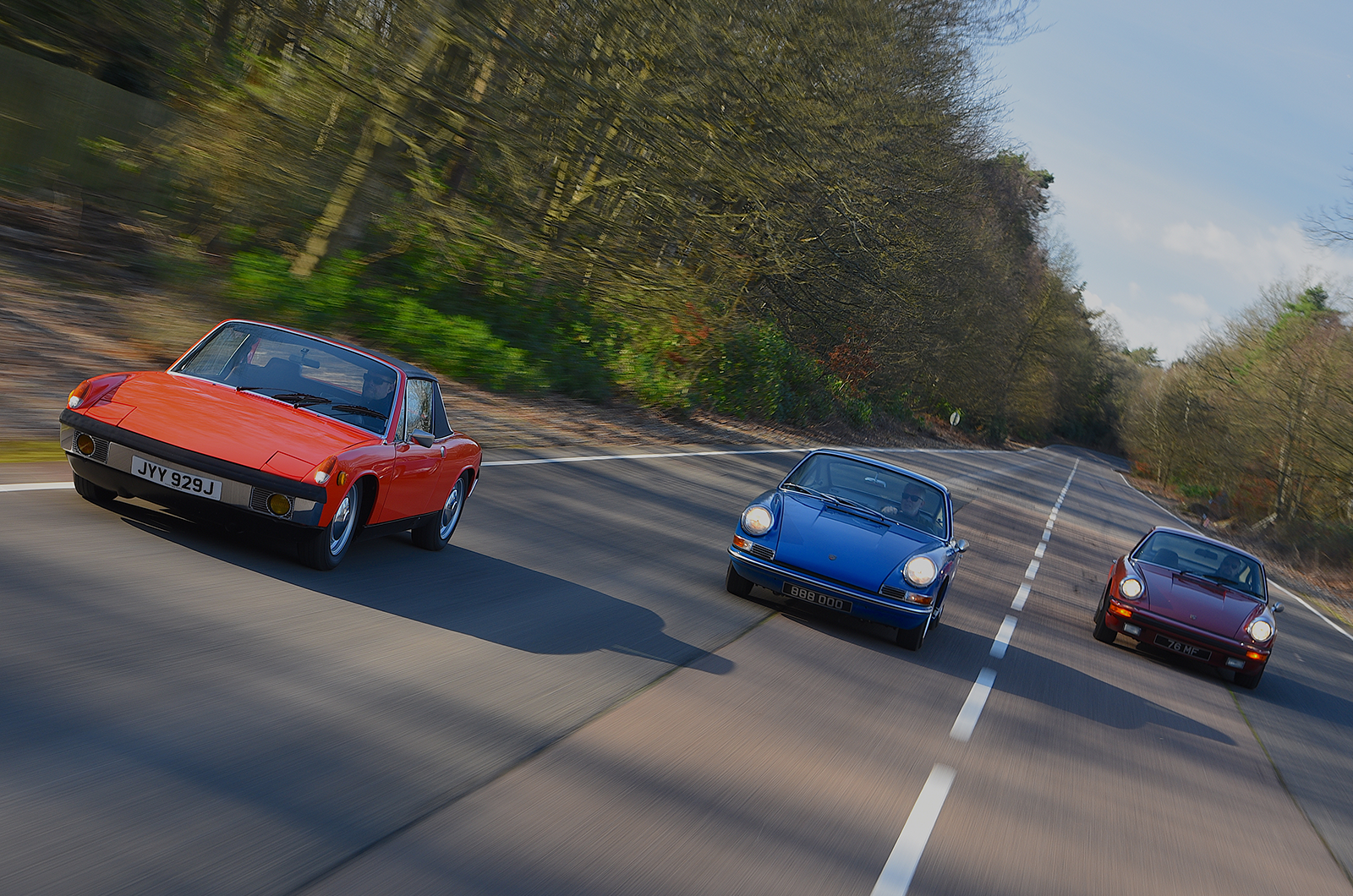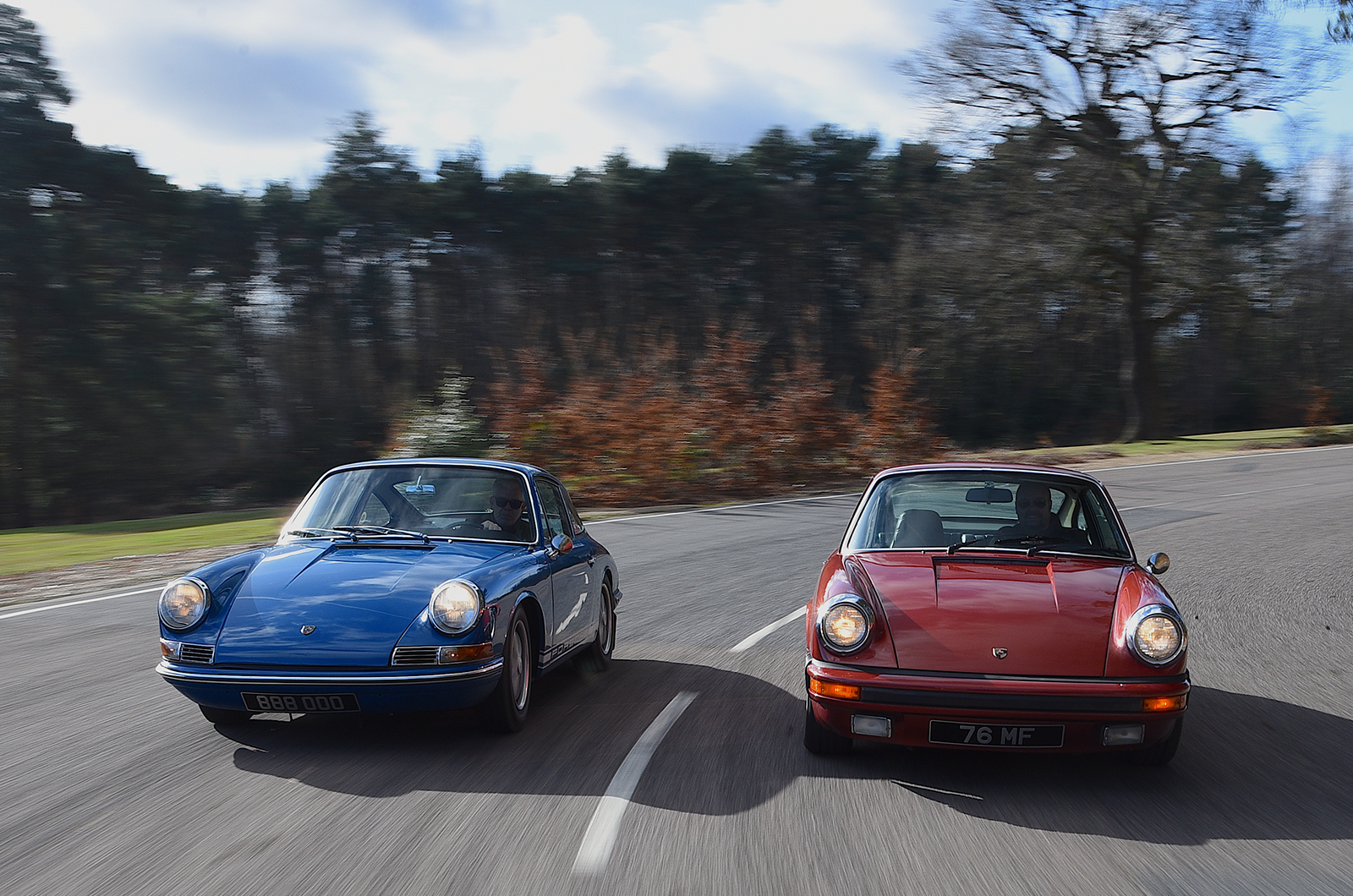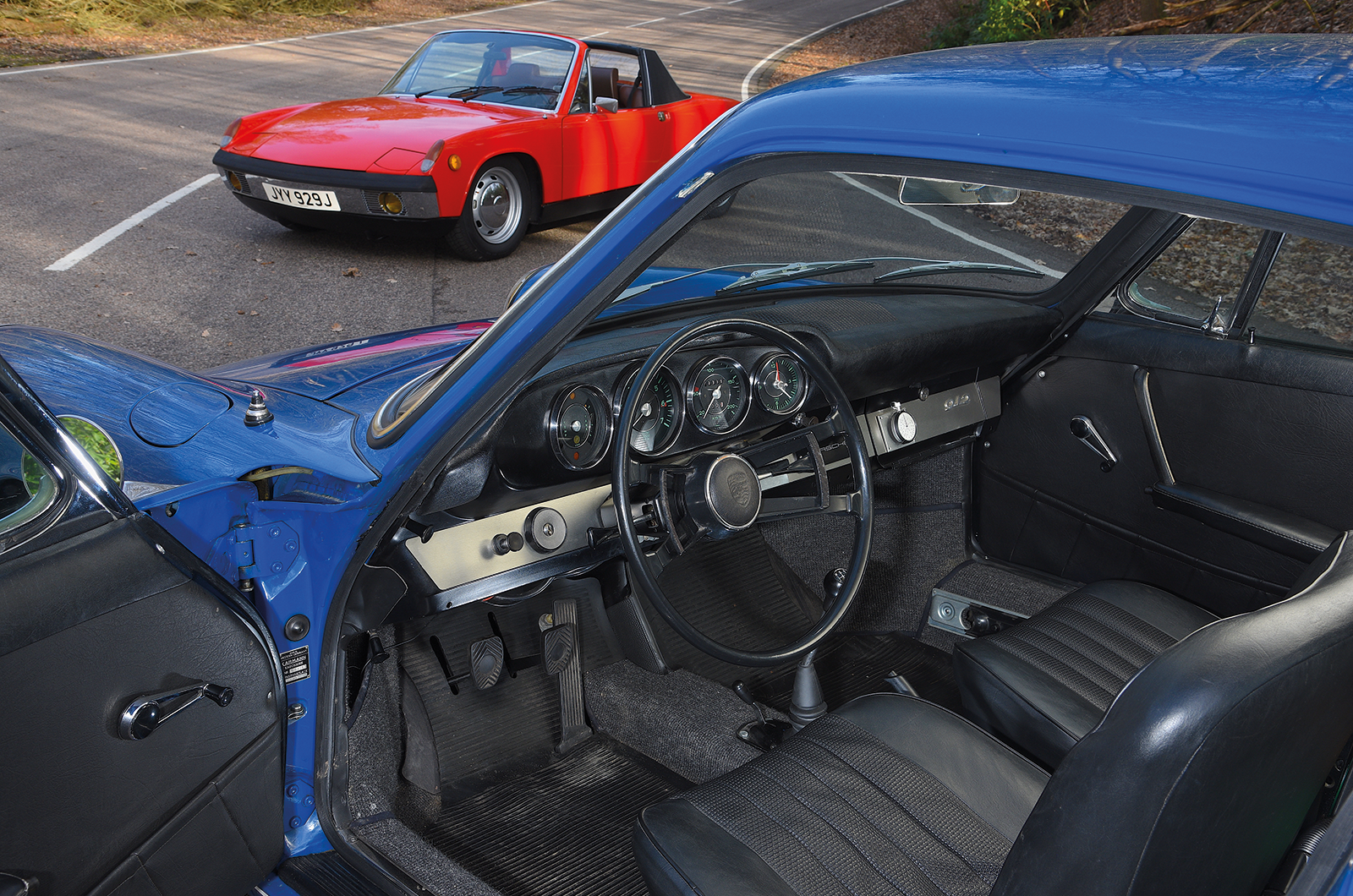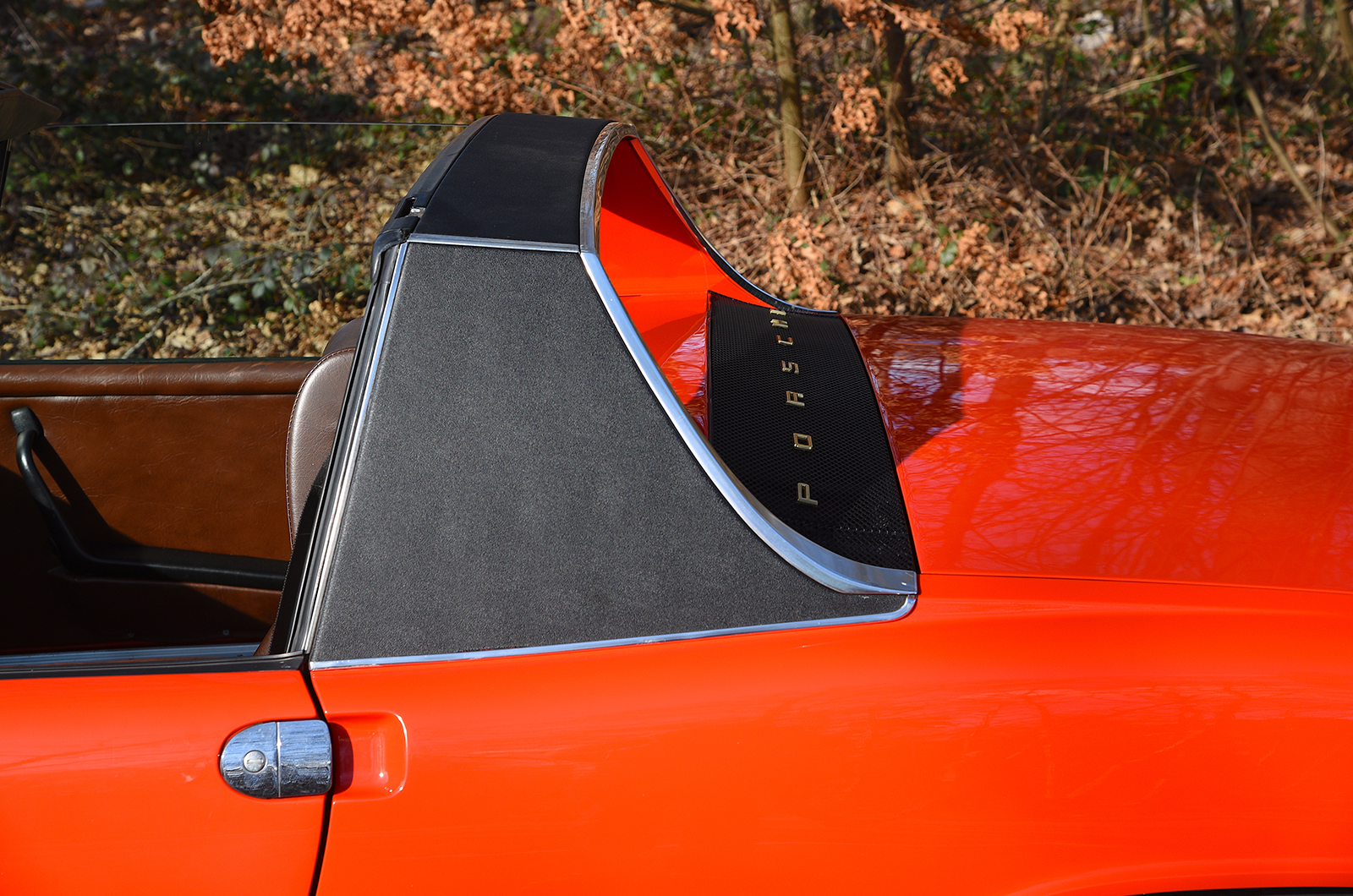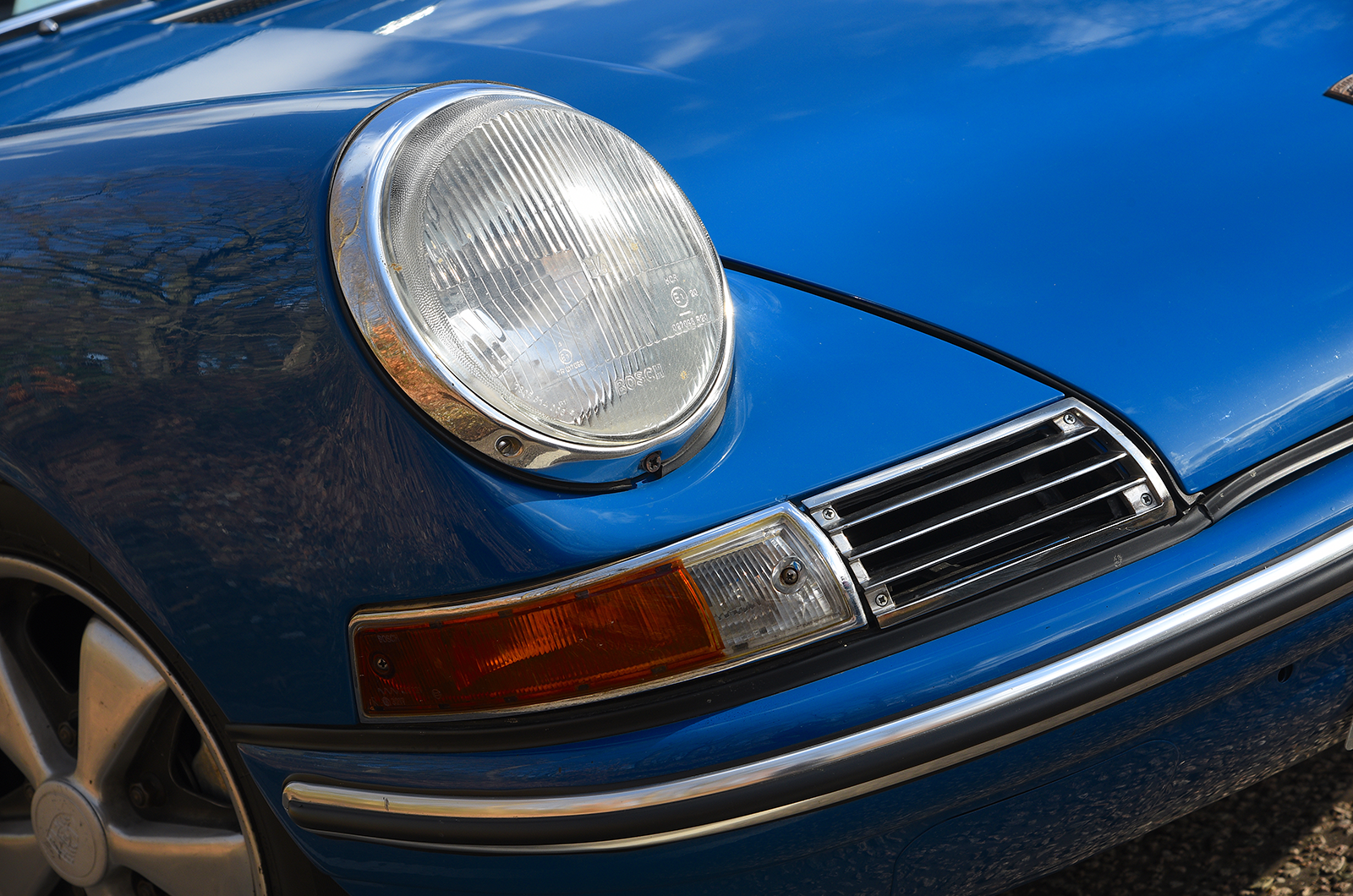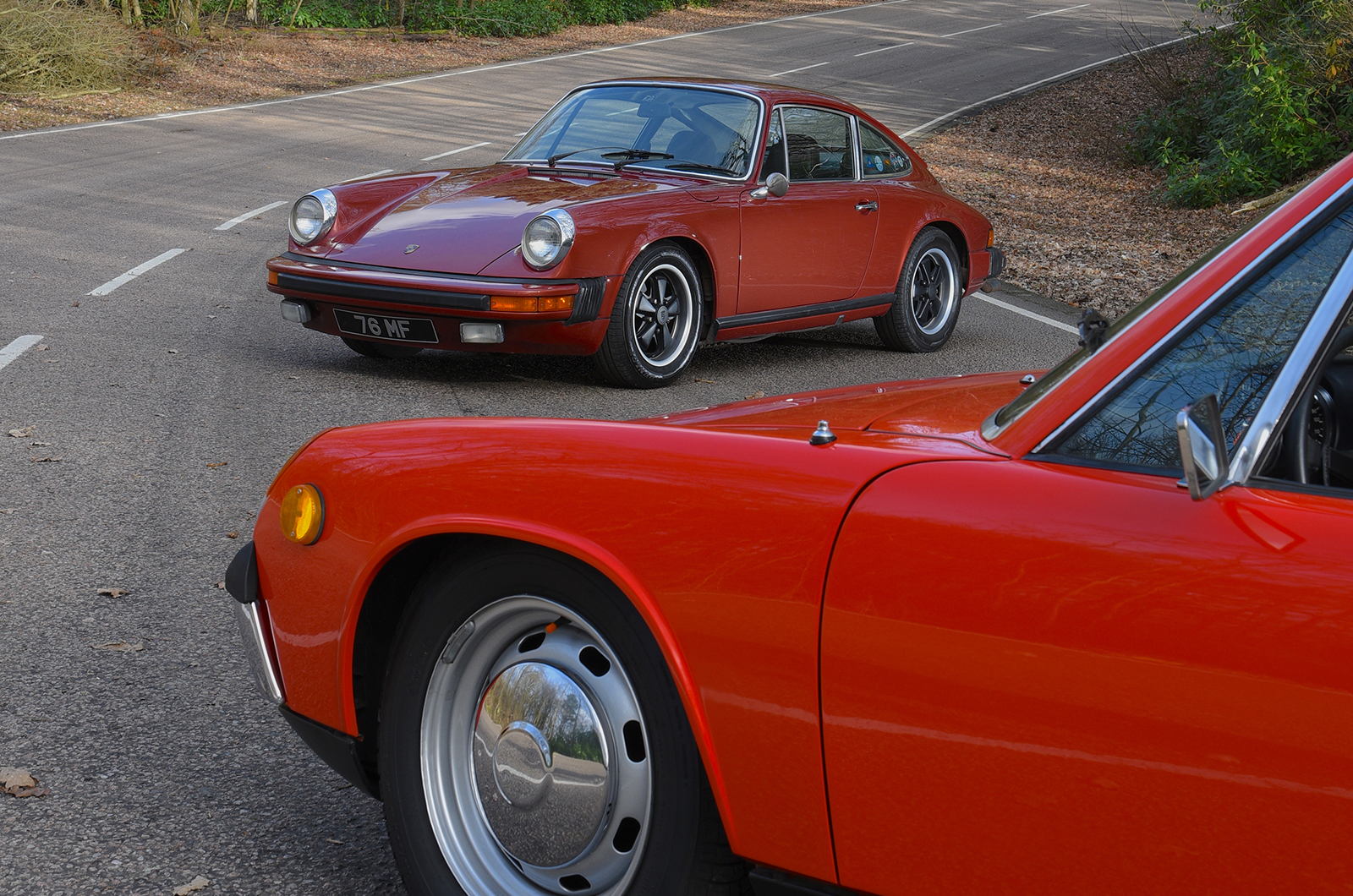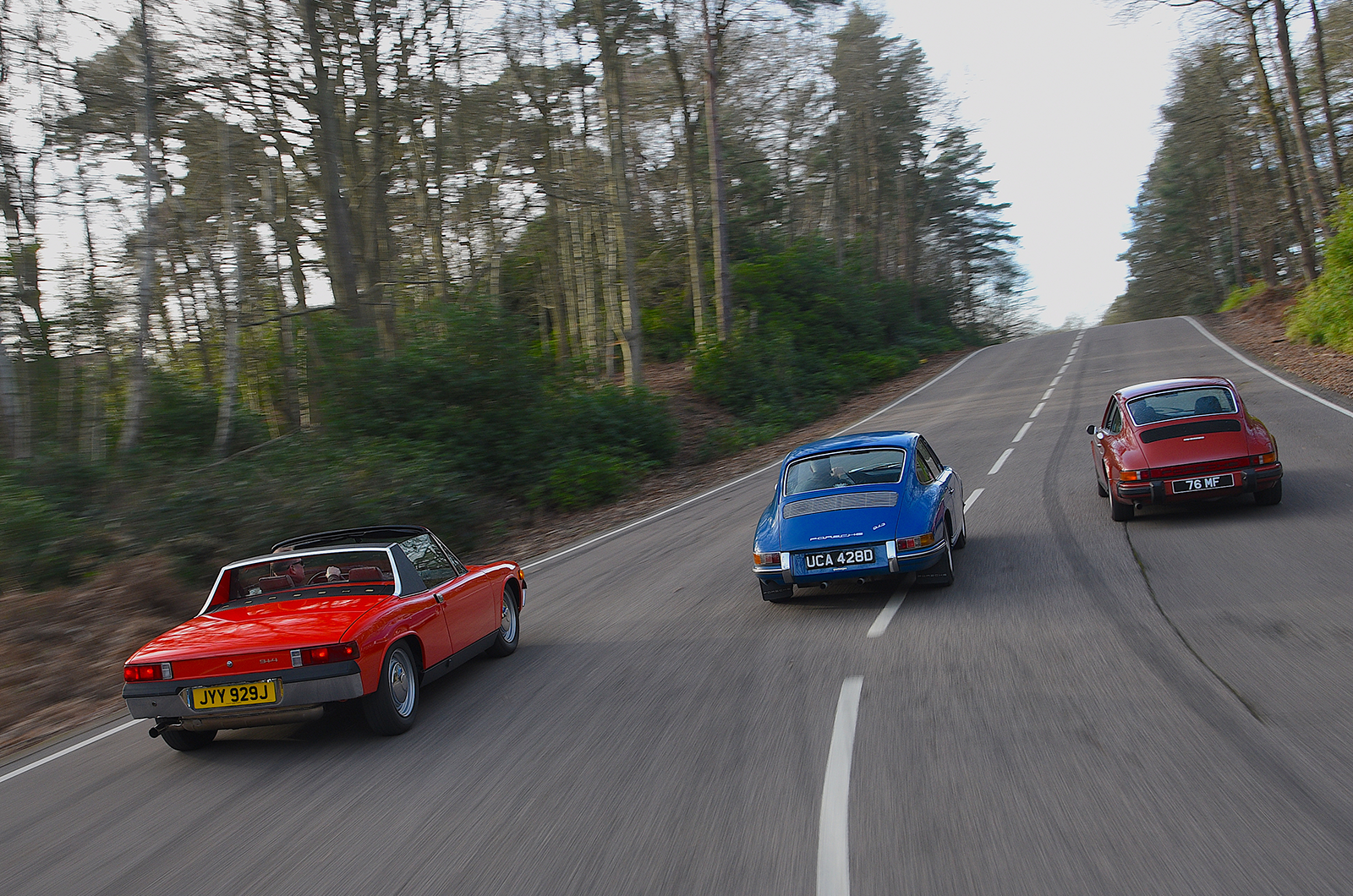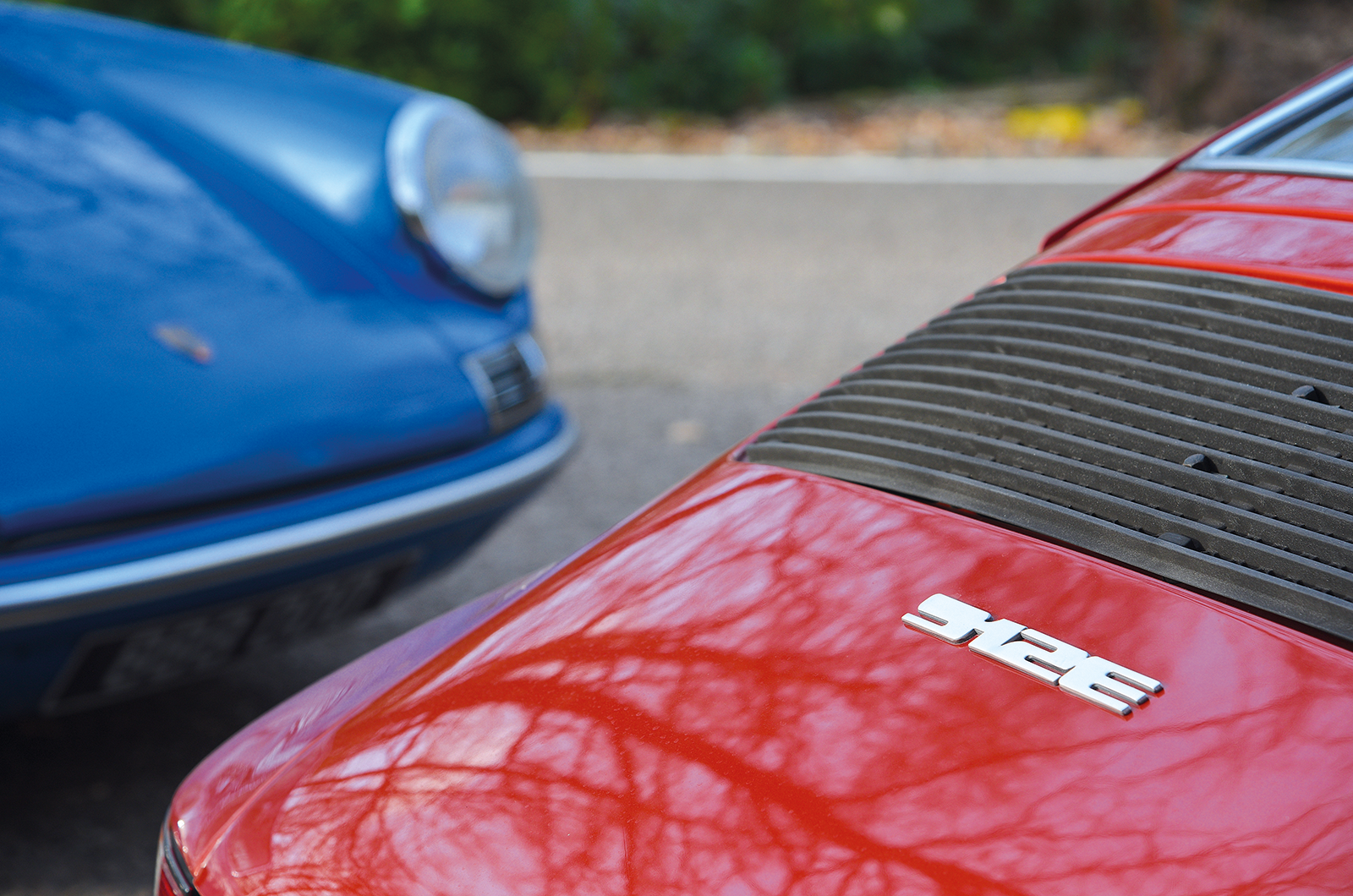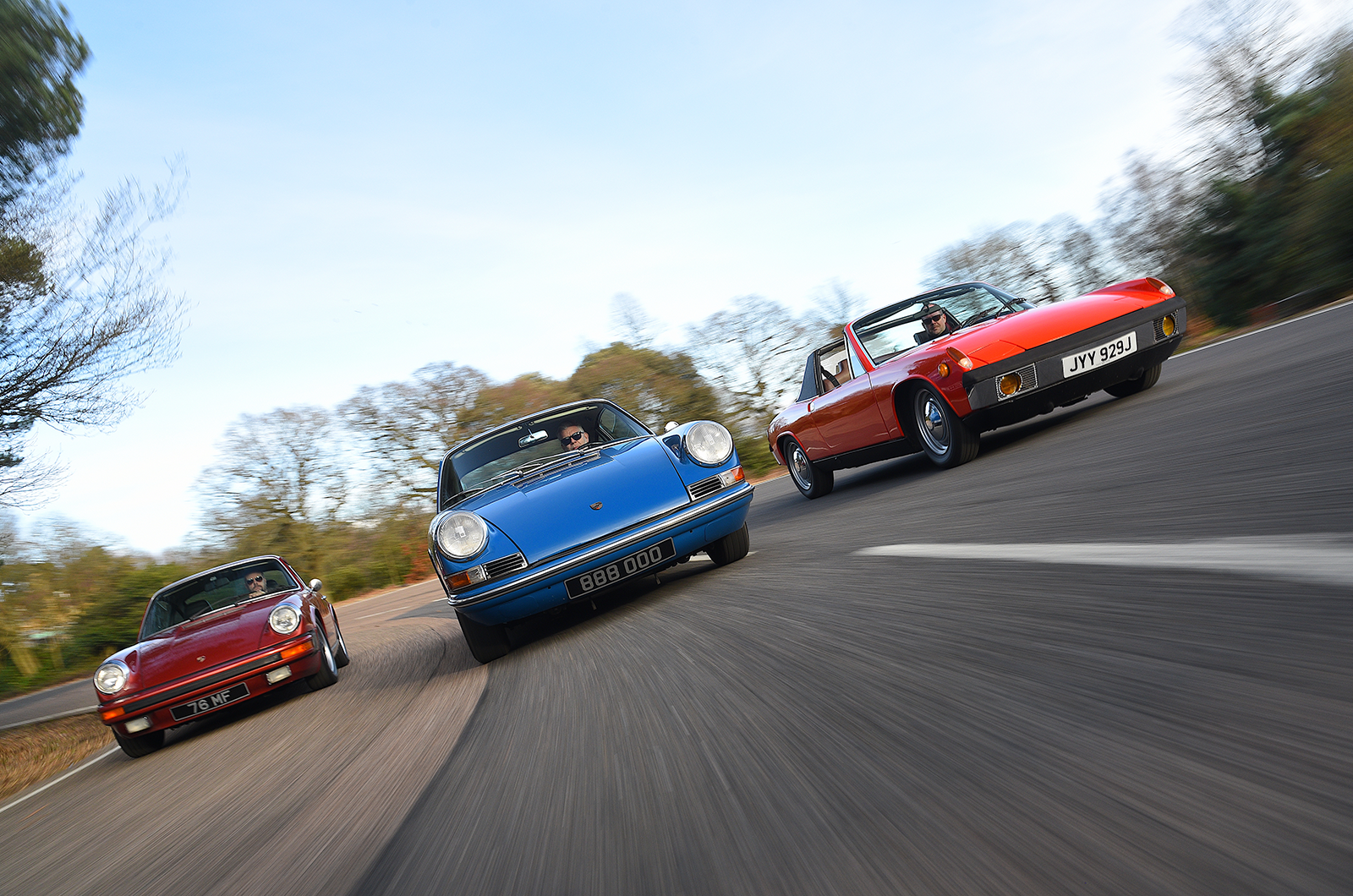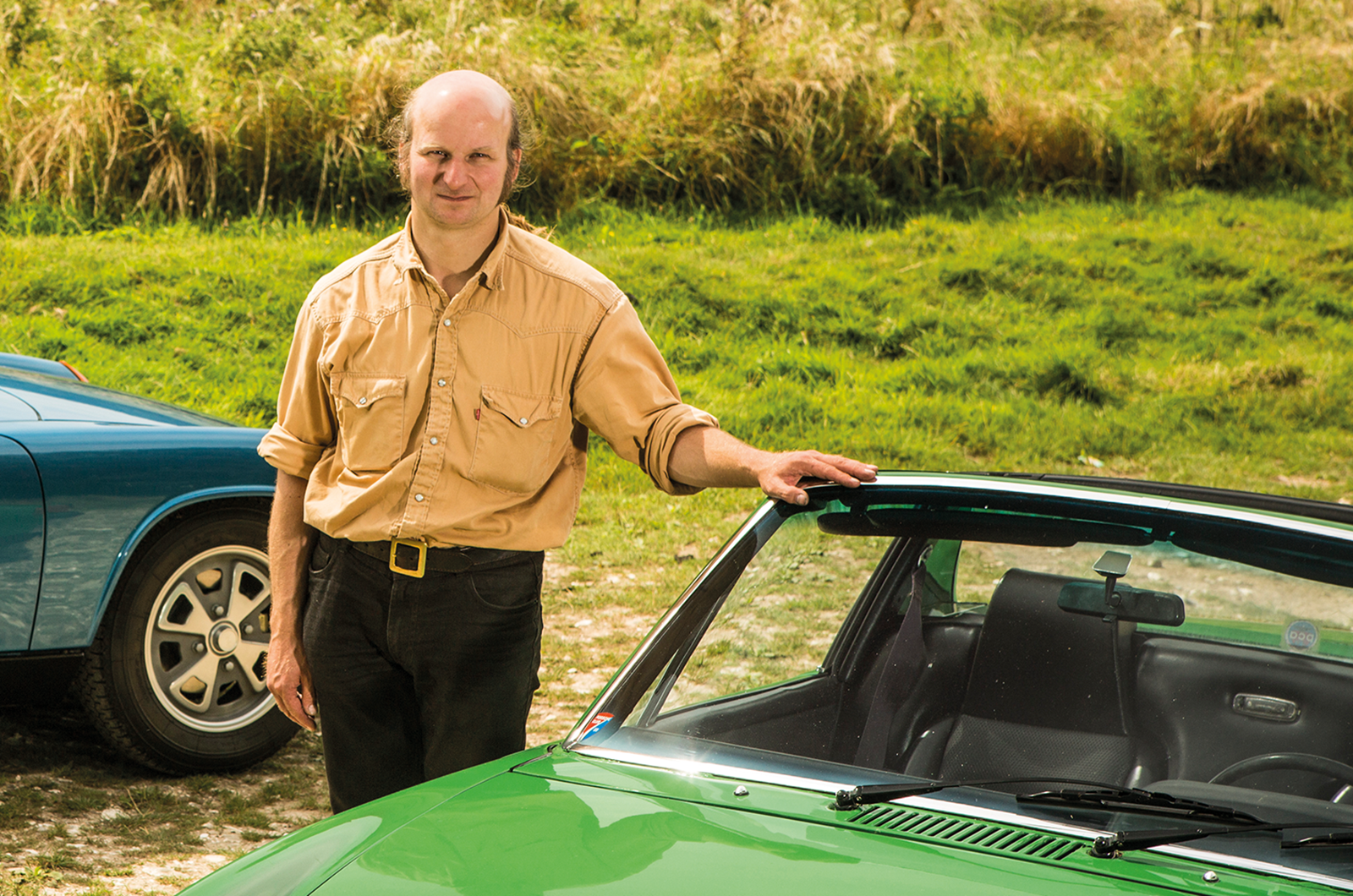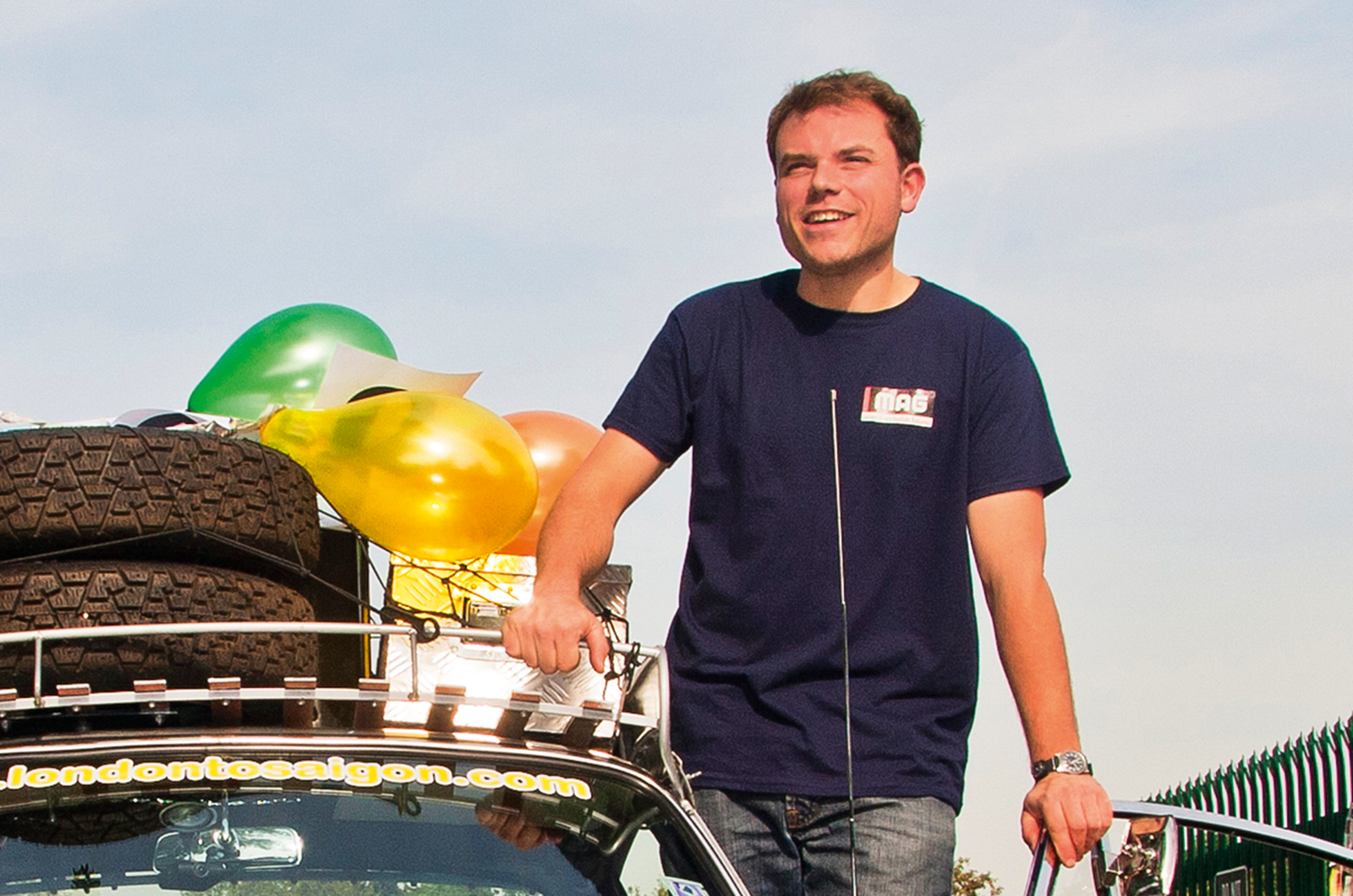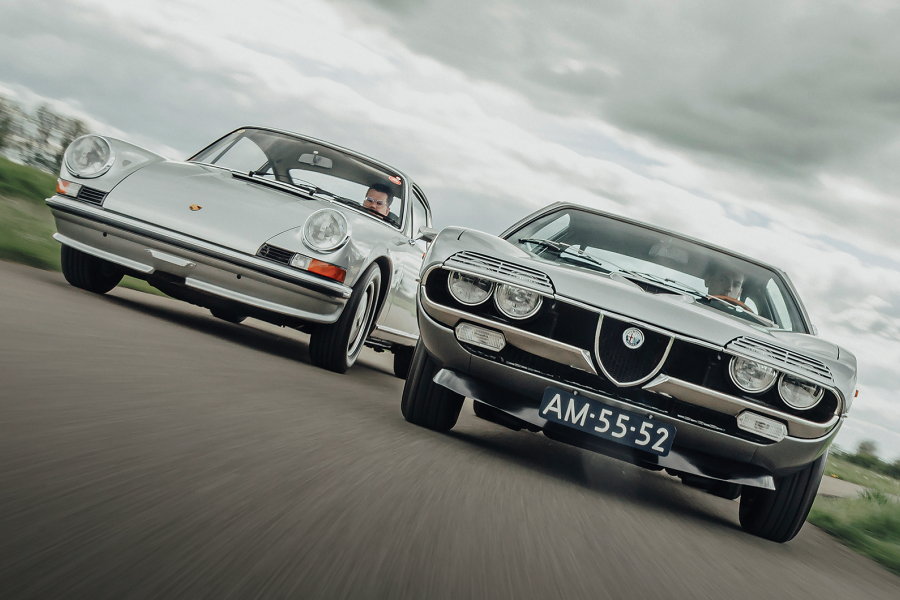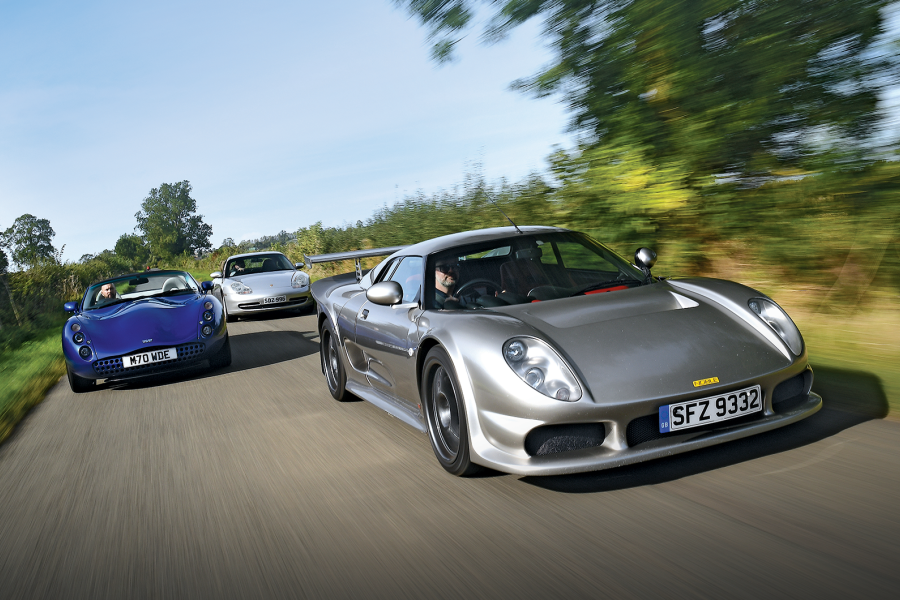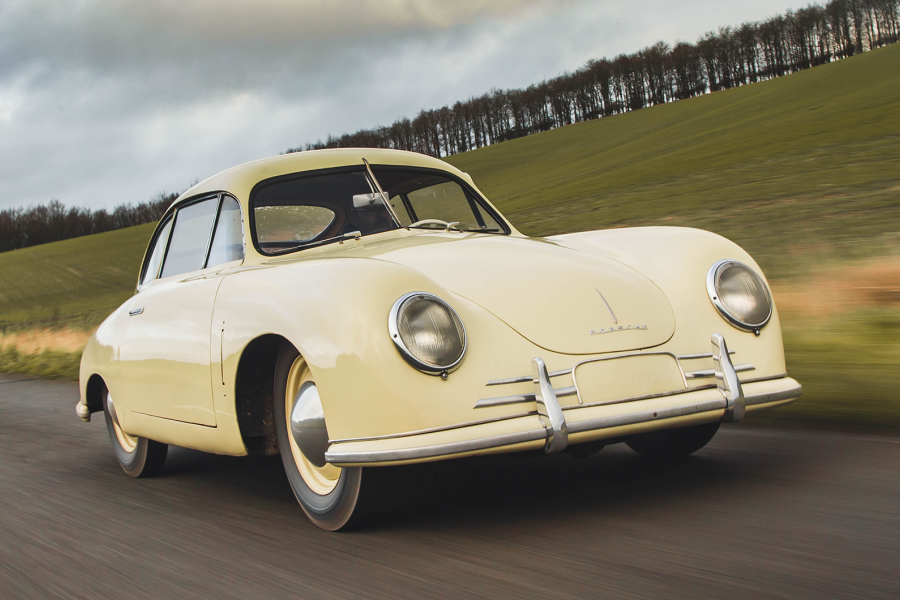The 356 was still available Stateside in late ’65, hence the 912 being held back to avoid cannibalising sales. There were no such problems in Europe.
“I always wanted an early 912 because of the design: the smaller doorhandles, the script on the back, the narrow body. It encapsulates everything that is early Porsche, with form following function. And it’s a three-dial car.”
Details of the 912’s more famous stablemate abound
It’s now four, because of the later addition of a matching VDO clock to the right of the speedo; later cars had the five-dial binnacle of the 911.
The padded dash, rather than body-colour metal, defines it as a late-year car, too.
There were subtle tweaks in the restoration, such as a slight lowering, an uprated exhaust and the optional Fuchs wheels.
“It’s had a bare-metal respray back to its Golf Blau and a sympathetic restoration – even the lenses are original, and he polished everything up without rechroming,” Macdonald says.
“I fell in love with it as soon as I saw it on Instagram and booked a £50 flight. Unbeknown to me, I’d actually seen and liked it on there before.”
Undervalued – but now appreciating
Macdonald goes on. “He paid me the ultimate compliment when he said, ‘I’m not going to sleep tonight because I have mixed emotions: I love this car but I know I have to sell it.
“My biggest fear was that someone was going to come over with the money and I wasn’t going to like the guy.’ When I was back at the hotel I sent him a text saying, ‘I hope you sleep well tonight,’ just joking, and he said, ‘I’m really pleased that it’s going to you.’
“It meant a lot that he was happy to sell it to me, and we’re now friends. He’s a lovely guy.”
Lovely enough to include in the deal the Heuer rally timer that is clipped to the dash.
This 914 is very standard, including these fab steel wheels
While Macdonald is only starting life with his 912, Grayston – who counts a 944 as his daily driver – is well accustomed to his 914, having bought it eight years ago: “I wanted orange, and didn’t want to spend too much.
“Auto Atlanta in Georgia specialises in 914s and I saw this on their site. I was told it was a good car, but needed paint. Within three months I’d got it, for $6000 when it was $2 to £1 – so it was cheap.”
But for stainless-steel heat exchangers and a Scart exhaust, the 914 is very standard, even down to the wheels.
“Fifty cars went to Brooklands last year for a 50th-anniversary event and 49 of them were on alloys,” Grayston says. “This came with the 5½J steelies on, and it looks great. People want Fuchs alloys so the steel wheels have become really rare because they were just binned; I have two sets with Porsche trims. One might go on my 912 project, but I may sell that; I’ll never part with this.”
All three have been bought to be driven and enjoyed
Naturally, the beautiful Sienna Metallic 912E has its own American backstory, too.
“It started at a dealer in Augusta, Georgia, then moved two miles across the border to North Augusta in North Carolina and stayed there for years,” explains Lindsay-Watson.
“Then it was sent to a US Air Force base in Germany with an officer, before he sold it to Kansas, and I picked it up just after it had been imported to the UK.
“I looked at a few – one was gold with cookie-cutter wheels and a Jake Raby six-cylinder conversion – but I wanted it to be original.
“This one had blistered paint but no rust, and I lived with it like that for a few months until my mum had it resprayed for me as a 40th-birthday present.
“It had been sitting for 13 years and done only five miles in that time, and was completely static for the last 10. We literally just did the oil, plugs, the usual stuff and I didn’t take it back for a service for 3000 miles – it didn’t miss a beat. They’re so resilient.
“The most amazing thing about this car is the chassis number: it’s 930 and, because this is the G-series, it’s the 930 shape.”
This 912E started life in America
That figure also places it right in the middle of the 2099-car run.
Oddly, despite the model being some way down the list when it comes to the most special Porsches, it is possibly one of the rarest in the UK: one of fewer than 10.
The American overriders remain and have proved their worth, according to its owner: “I was out once and a friend came running over to say someone had just hit my car. It had jumped maybe a metre out of its parking space but there wasn’t a mark; the Audi A1 had a huge dent!”
Canny investors and enthusiasts have been making hay on the four-pot 911’s values – C&SC, meanwhile, is now on its second art editor who regrets once letting one go for peanuts.
Such was the reputation and the lack of enthusiasm for the cars. How we’ve all missed out, it appears.
These three flat-four Porsches deserve their time to shine
The 914 is perhaps the most attainable, but days of deals such as Grayston’s are long gone. And for cars of this quality you’re looking at 911 money.
Not one of our owners bought their car with plans for investment, but to use. The phrase “not a garage queen” came from each more than once, and the cars are all the better for it.
As for which has come away with the best deal, that depends on what you want from your everyday Porsche.
For the purest looks it has to be the 912. For B-road bashing it’s the 914. For an all-rounder with modern comforts the 912E wins hands down.
But for me, someone who has always yearned for a 356 and dreams of an early 911, it has to be the missing-link 912.
Yet there will still be many for whom the choice is difficult for entirely opposite reasons. Prejudice can’t be shaken off overnight, or with a few thousand pounds added to their values. Perhaps, though, those preconceptions might now be misconceptions for some.
Images: Will Williams
Thanks to Revival Cars; DDK Online; Kevin Clarke; Nick Trott
Expert’s view
Kevin Clarke
In the world of 914s, one man’s name crops up more than anyone else’s: Kevin Clarke, 914 Register organiser for the Porsche Club of Great Britain and serial owner.
“People say ‘I like your 914’ now,” he says. “Before, they would ask what it was. A few years ago, when the 911 had its jump in values the 912 followed, and then the 914. The Karmann Ghia used to be maybe three times as expensive, but now they’re about the same.
“A project is around £6-7000, and a usable one is about £15,000 but might still need attention. For one like James’ it’s at least £20k now.
“The 1.8s are similar to the 1.7s, whereas the 2-litres are more desirable and about £26,000. As for the 914/6, some in Germany are well north of £100,000. Values have levelled out but they’ll continue to rise, just maybe without another jump.
“Because it’s a VW Type 4 engine the parts are available and servicing is pretty reasonable. It varies, though, because the suspension and parts of the ’box are Porsche.”
Expert’s view
Max Levell, Revival Cars
Few know 912s like Max Levell, who not only owns specialist Revival Cars, but also drove one from London to Saigon (C&SC, May ’11).
“Where the 911 has rocketed up and then fallen a bit, the 912 has been a slow burner,” says Levell.
“Prices have been gradually appreciating, but they’re still undervalued. I’ve had one for 20 years – I paid £3000 and drove it home. Now, a project would set you back £15-25,000 – anything less is really parts value. For a usable 912 you can spend between £25,000 and £40k, and up to around £60,000 for a top car.
“Servicing is really the same as a 911 – if the engine goes it’s 911 expensive. But that doesn’t seem to be putting anyone off: in fact, we have clients who have expensive collections that tell us they don’t want a 911, they specifically want a 912.
“Steel wheels are becoming sought-after: when people were making their 912s look like 911s they put on Fuchs wheels; now people want their 912s to look like 912s.”
Factfiles
Porsche 912
- Sold/number built 1965-’69/28,333
- Construction steel monocoque
- Engine all-alloy, air-cooled, ohv 1582cc flat-four, with two Solex 40 PII-4 carbs
- Max power 90bhp @ 5800rpm
- Max torque 90Ib ft @ 3500rpm
- Transmission four-speed manual (optional five-speed), RWD
- Suspension independent, at front by MacPherson struts, anti-roll bar rear semi-trailing arms; torsion bars, telescopic dampers f/r
- Steering rack and pinion
- Brakes discs
- Length 13ft 8in (4163mm)
- Width 5ft 3in (1610mm)
- Height 4ft 4in (1320mm)
- Wheelbase 7ft 3in (2211mm)
- Weight 2138lb (970kg)
- 0-60mph 13.5 secs
- Top speed 115mph
- Mpg 33
- Price new £2467
- Price now £25-60,000*
Porsche 914 1.7
- Sold/number built 1969-’76/118,978
- Construction steel monocoque
- Engine iron-block, alloy-head, air-cooled, ohv 1679cc flat-four, Bosch D-Jetronic fuel injection
- Max power 85bhp @ 4900rpm
- Max torque 109lb ft @ 2900rpm
- Transmission five-speed manual, RWD
- Suspension independent, at front by wishbones, damper struts, torsion bars rear semi-trailing arms, coil springs, telescopic dampers
- Steering rack and pinion
- Brakes discs
- Length 13ft 1in (3985mm)
- Width 5ft 5in (1650mm)
- Height 4ft (1220mm)
- Wheelbase 8ft 1in (2450mm)
- Weight 1982lb (899kg)
- 0-60mph 11 secs
- Top speed 110mph
- Mpg 26
- Price new £2261
- Price now £10-30,000*
Porsche 912E
- Sold/number built 1975-’76/2099
- Construction part-galvanised steel monocoque
- Engine iron-block, alloy-head, air-cooled, ohv 1971cc flat-four, with Bosch L-Jetronic fuel injection
- Max power 86bhp @ 4900rpm
- Max torque 93Ib ft @ 4000rpm
- Transmission five-speed manual, RWD
- Suspension independent, at front by MacPherson struts, anti-roll bar rear semi-trailing arms; torsion bars, telescopic dampers f/r
- Steering rack and pinion
- Brakes discs
- Length 14ft 1in (4291mm)
- Width 5ft 3½in (1610mm)
- Height 4ft 4¾in (1340mm)
- Wheelbase 7ft 5½in (2272mm)
- Weight 2557lb (1160kg)
- 0-60mph 10.1 secs
- Top speed 113mph
- Mpg 33
- Price new $11,940
- Price now £25-40,000*
*Prices correct at date of original publication
READ MORE
8 £10k Porsches that will have you raiding your piggy bank
Meet the super-cute forgotten Porsche rival you’ve probably never heard of
Dive into our packed Porsche Greatest Hits special
Jack Phillips
Volvo-owning Jack Phillips is a contributor to and former Deputy Editor of Classic & Sports Car

